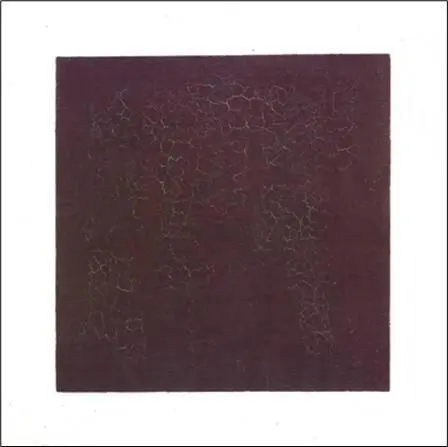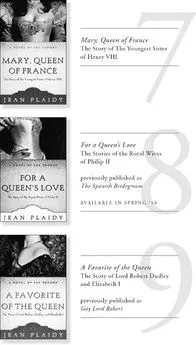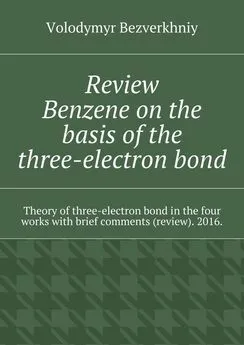Elena Vasilevskaya - Suprematistic QR code: The Essence of the Legend
- Название:Suprematistic QR code: The Essence of the Legend
- Автор:
- Жанр:
- Издательство:неизвестно
- Год:2021
- ISBN:нет данных
- Рейтинг:
- Избранное:Добавить в избранное
-
Отзывы:
-
Ваша оценка:
Elena Vasilevskaya - Suprematistic QR code: The Essence of the Legend краткое содержание
Suprematistic QR code: The Essence of the Legend - читать онлайн бесплатно ознакомительный отрывок
Интервал:
Закладка:
Elena Vasilevskaya
Suprematistic QR code: The Essence of the Legend
Foreword
As we explore the peculiarities of the discourse that is interesting for us, we find the proofs of our ideas. As we study Malevich’s biography and art, we fall into the world of his suprematist ideas. We find it necessary to highlight that this person has devoted his life to art completely and neither of the false rumors has stopped him from his creations. Time has made everything to be right. However, despite Malevich’s world fame his pieces of art are not fully understood. This book contains complex and objective overview of Malevich’s art movement. The following research leads its reader to the idea of suprematism global realization which happens right now, when new tendencies and technologies appear, and makes him understand that he is an integral part of this process.
The term “Square”
Here comes a thought… There are too many of them. No. They have overwhelmed everything around. They are on subways, streets, magazines, pages of the Internet, packages, business cards. Big or small, colorful but commonly black squares are everywhere, and they form a multi-component homogeneous figure.
A square is a regular quadrilateral which angles and sides are equal. However, the square considered below is only visually similar to the described figure because its sides are not equal to each other, pairwise are not parallel.
As we hear the word “square” we recall in our mind Malevich’s painting associatively. And then the figure that appears in our consciousness becomes black. It seems that drawing a black square on a white background is very simple, and this idea is primitive. However, a painting with a simple geometric figure is recognized as a masterpiece in the world. The “Black Square” (1915) is the work of Kazimir Malevich (February 23, 1878 – May 15, 1935) that is considered as his magnum opus. It is of the high value. The artist has painted many paintings. Why has only the “Black Square” occupy the minds of people?
The painting gives a mystic call to recognize its conceptual, philosophical design and becomes a reason of viewers’ indignant w-questions. It has sparked our interest to make this versatile study. Despite the fact that there are many works on K. Malevich’s art, it remains mysterious. It is still written by a person who has not been fully understood.
It is important to understand that there are too many facts about K. Malevich and they sometimes when are taken from the various sources are not identical. Malevich has deliberately provoked these differences to integrate them into his own history of art. The artist left so many mysteries! That is why a creation of the picture of Malevich’s world, which could shed light on the hidden meanings of his art, is desired.
“I guess that exploring, studying, recognizing are possible only when you can get a unit that is not connected with surroundings, that is free from any affection and any addiction. If I can do it, then I will study it, if I don’t do it, I will receive nothing but lots of pieces of excerpts and conclusions 1 1 Aleksandra S. Shaktskikh, compl., “ Kazimir Malevich. Chyorny kvadrat” [Kazimir Malevich. The Black Square]. St. Petersburg, Azbuka Publ., 2001, p. 151.
.” – K. Malevich wrote.
The term system was Malevich’s the most favorite one. He thought that in science and art everything new was based on previous experience and following the important tendencies could make individual art valuable.
The “Black Square” is not a form that just happened. It is an evolution of Malevich’s artistic form, idea, his meaning of life.
Brief essay on history of art and politics of the beginning of 20th century
All the artistic trends that has appeared in the 20th century are usually called the avant-garde. There are conflicting styles with completely different symbols united under this title.
The “Black Square” has become the pearl of the Russian avant-garde, national and world famous symbol that has received a response from many people.
The painting is unique due to many interpretations, variations and modifications.
The role of fine art in the formation of sign systems is invaluable, therefore, its analysis becomes necessary when studying the semiotic plan in the work of a particular artist.
The increase in the number of new author’s styles and author’s techniques, as well as the return of unappreciated or misunderstood ideas, which was initially rejected by the 20th century and re-acquired relevance at the turn of the millennium, was one of the achievements of the same 20th century.
Now, at the beginning of the new century and millennium, it is important to comprehend those global changes that have destroyed the way of life that has been taking shape for centuries. Since these changes have been proceeded tremendously fast, the attitude towards time has changed, and the century brought countless different directions in art. Technical and technological capabilities have transformed the very way of creating an artistic creation using new methods: computer graphics, photography, digital means, a variety of artistic material, etc.
There was an atmosphere of transformation in the beginning of the 20th century. The proletariat and bourgeoisie were fought for the socialist reorganization of society, the social system changed, the division due to anti-religious propaganda took place. People’s minds transformed. They started to think in completely different way.
All these events had found the reflection in the artistic styles of decadence, where artists strived to show a new, perfect, changed world with a positive attitude and meaningful disappointment at the same time, with shocking and nihilistic positions towards outdated values of culture and life. The past was interpreted as something frozen, and the future as a new necessary process. This row of social catastrophes produced then some doubts on the rationality of these events. Both artists and the creative intelligentsia became the prism of that time which projected the ideas of protest, expression, individuality, and defeat. Technological innovations gave birth to belief in their own power and independence.
So-called “Revolutionaries of the avant-garde” and the Bolsheviks took concerted action only in the first post-October years. Later Socialist realism became prevalent trend and that slowed down the process of modernization of artistic culture in our country, which was taking place in full swing in Europe, for half-century.
All these events influenced trends of painting, made it changeable and unstable. After 1930 the modernist tendencies of fiction, both Malevich’s name and his “Black Square” were banned almost until the end of the 20th century.
Kazimir Malevich became world famous after a half-century delay. In Russia it happened when the Soviet ideology collapsed. In Europe it started earlier because the artist had taken away his numerous works and canvases and they found its home in the private and public collections and in the Steidelik Museum, Amsterdam.
Not only artistic works but Malevich’s philosophical and literary ones are also of the high value. In this case Malevich’s art should be studied as a concept of dormitory (Malevich called human civilization “dormitory”) which is formed by artist’s style, theoretical conclusions and the “Black Square” as a logo. To evaluate Malevich’s legacy the study must be done in a holistic and voluminous manner with the identification of the most significant moments in the life and work of the artist-thinker.
Either the study of the secrets of creativity or the facts of Malevich’s life or the artist’s thoughts, the creation of a suprematist masterpiece form a plastic formula which makes it possible to find realization of Malevich’s artistic and written prophecies depending on time and to get closer to the artist’s intention.

Black Suprematistic Square, 1915
Oil on linen, 79,5 х 79,5 cm
Tretyakov Gallery, Moscow 2 2 Aleksandra S. Shaktskikh, “Kazimir Malevich” [Kazimir Malevich]. Moscow, SLOVO Publ., 1996, p. 4.
Becoming of the artist
Kazimir Malevich was born in a family of a sugar cook and a housewife in Kiev in 1878. Kazimir was the first child. He had four brothers (Anton, Boleslav, Bronislav, Mechislav) and four sisters (Maria, Wanda, Severina, Victoria). Malevich spent his childhood in the Ukrainian countryside. There he watched how the painted stoves and the embroidered national patterns were made. Later he recalled that this folk culture had influenced his works. When Kasimir was 15 years old his mother bought him a set of paints in Kiev. From that moment his artistic path began. In 1896 the Malevich family moved to Kursk. In 1899 Kazimir married Kazimiera Zglejc (1883–1942), the daughter of a Kursk doctor. She was a paramedic. Kazimir and Kazimiera had a son Anatoly (1901–1915) and a daughter Galina (1905–1973). Malevich worked in the Office of the Kursk-Moscow Railway as a draftsman. It should be noted that professional activity and specifically work with architectural drawings had influenced the artist’s choice of geometric shapes in painting.
Together with like-minded people Malevich organized an art circle in one of the rooms of the Administration building where they came after the government service to draw both plaster figures and people from nature. “The Exhibition of Moscow and Nonresident Artists’ Paintings” (1905, Kursk) was the first for Malevich. After some years Malevich get bored with measured provincial life. His thought to move to Moscow became obsessive.
In Kursk the first stage of K. Malevich’s creative biography began. Later the researchers classified this period as the early impressionism. The Influence of the French artists was observed in early works such as “Spring Landscape” (mid-1900s, private collection, Paris) and “Church” (circa 1905, private collection). Here Malevich made color and light effects which ranged from discrete brush strokes to neo-impressionistic pointalism with evenly covering the canvas with fine dots. Impressionism was the first step towards the term simulacrum in the postmodern philosophy of our time. Virtual reality which did not exist in reality but was created with the help of technology allowed us to comprehend possible variations of the simulation concept.
When Malevich finally arrived in Moscow in the summer of 1905, he applied for admission to the “Moscow School of Painting, Sculpture and Architecture”, but did not pass the exams. He stayed in Moscow and rented a room for a nominal fee in an art commune in Lefortovo where many artists lived. But in the spring of 1906 he returned to Kursk for the government service. A year later he again moved from Kursk to Moscow with his family and tried to enter the school for the second time. The attempt was unsuccessful.
It is worth noting that since the beginning of 20th century so-called home-grown boors (students) spated 3 3 Mariya Glushkova, ed., “ Krasny Malevich: stat’i iz gazety “Anarhiya” [Red Malevich. Articles from the “Anarchy” newspaper]. Мoscow, Common place Publ., 2016, pp. 55–56.
on traditional, itinerant, naturalistic, classical art within the walls of the school where at that time the teaching was based on V. Serov’s, K. Korovin’s wonderful painting schools. They were often expelled problematically, and this process caused many scandals. These students were Vladimir Mayakovsky, Mikhail Larionov, Robert Falk, etc. This was a layer of innovators that were the so-called left painters. The same fate might have awaited Malevich.
Интервал:
Закладка:




![Джеймс Купер - Пионеры, или У истоков Саскуиханны [The Pioneers, or The sources of the Susquehannah]](/books/1066142/dzhejms-kuper-pionery-ili-u-istokov-saskuihanny-t.webp)





